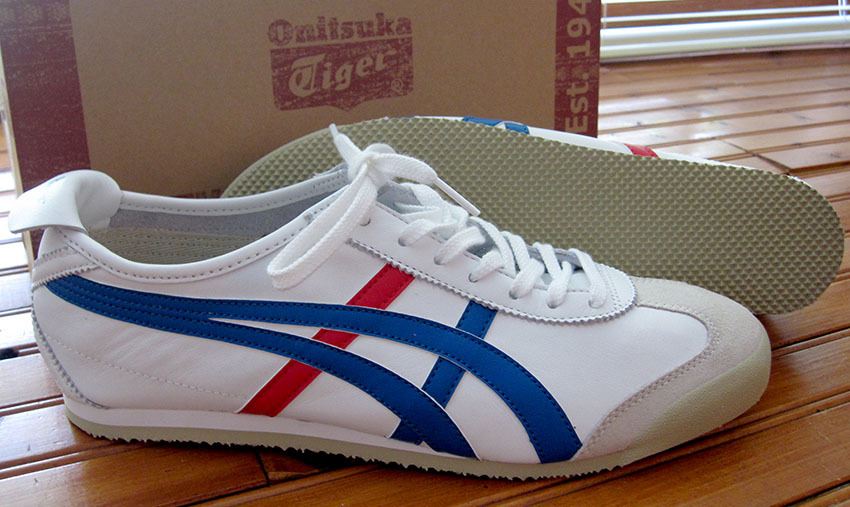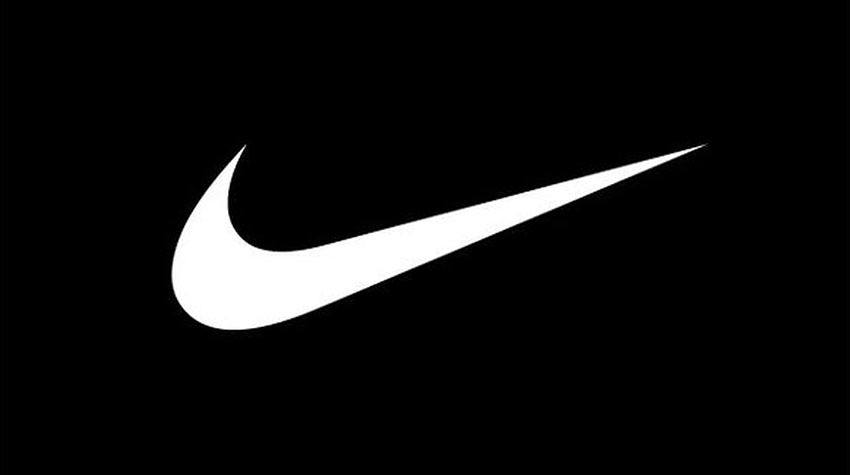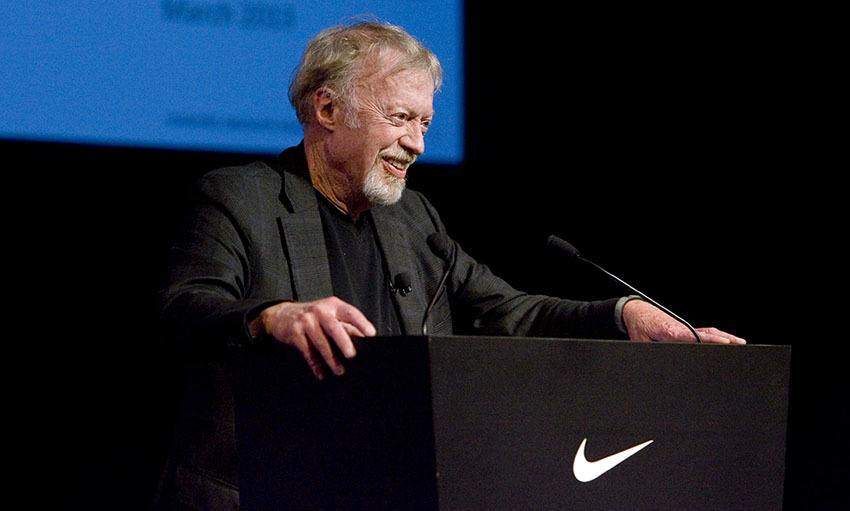Two companies IPO’ed on the same day in December of 1980. They would go on to change industries and redefine advertising. And buying stocks that day in either of these corporations would have made you enormously wealthy. Their names? Apple and Nike.

While they started off on the same day, three decades later Apple dwarfs Nike in many ways. In market valuation (~$900B versus ~$90B), employees (~120,000 versus ~74,000), and brand recognition (1st versus 18th). Even their founders matchup in a similar way: Steve Jobs gets 50M hits on Google, Phil Knight less than 500,000.
Yet Nike was an example to the late Steve Jobs. This video of an internal Apple meeting is legendary in marketing circles. Jobs specifically mentions Nike. He points out how the brand manages to make us feel something special, even though they sell a commodity (shoes).

Nike’s approach inspired Jobs (and many others) to build his global brand. For this reason, we study unknown leadership lessons from Phil Knight first. We’ll look at Steve Jobs in a future article.
The king of marketing?
The primary source for this article is Phil Knight’s self-written memoir Shoe Dog. I picked up a copy because it’s regularly mentioned in books about branding and advertising. But what this book should be known for instead are entrepreneurship and leadership.
While it’s thin on marketing and advertising insights- Knight, in fact, confesses he never believed in the practice- this story is an extraordinary telling of what it takes to build a company. The hardship, the personal sacrifices, the constant uncertainty, the endless path to financial stability, the existential threats, and the terrifying decisions.
So before going into the leadership lessons from Knight’s memoir, first a general recommendation about Shoe Dog:
- If you’re an entrepreneur yourself or have been one, get this book. You’ll laugh and cry and recognize so many moments from your own life.
- If you’re thinking about starting your own company, don’t just do it. First, read this book.
- If you have a loved one who’s running a company and you don’t understand why “being your own boss” can be so tough, read this book.
Now let’s get into the five most important leadership lessons from Phil Knight.
1. Branding and advertising do not have to come before selling
As we saw in the introduction, Nike is considered one of the greatest brands of our times. Yet founder Phil Knight is not an advertising man. In fact, he was an accountant for most of the early years of Nike. That’s right. He did Nike as a side-job before going “all-in.”
Knight ran the business on a simple premise: a relentless focus on sales.
“I drove all over the Pacific Northwest, to various track meets. Between races I’d chat up the coaches, the runners, the fans, and show them my wares. The response was always the same. I couldn’t write orders fast enough.”
There was no pre-conceived idea by an advertising agency to create Nike. Nike was not even called Nike for most of its first decade in existence! Early on, the company was known as Blue Ribbon Sports and lived from shipment to shipment, just selling enough to increase the order size each time.
“WHEN I WASN’T obsessing about the trial, I was fixated on sales.”

Knight’s focus on sales doesn’t mean you should ignore brand strategy nor advertising. And of course, times are different now. Still, Nike is an excellent example of a company where market demand and a strong emphasis on sales proceeded everything else. They didn’t spend years in a laboratory building a product nobody wanted. Instead, as Marc Andreessen has famously said about real product/market fit, the market pulled the product out of the company, not the other way around.
It’s something to think about: strong market demand and a relentless focus on sales came first. Those efforts laid the foundation for one of the greatest brands of all time. It did not happen the other way around.
2. Don’t believe everything you read in conventional management books
Another area where Knight sheds modern best practices is in management. Conventional wisdom says managers should be available. They should be there to help their employees. To be in service of their teams. They should praise people often. And so on.
Not so with Knight.
In the early days of Blue Ribbon Sports, things went down quite differently. Knight had a few part-time sales representatives working for him across the country. One of them, Jeff Johnson, kept sending letters about all sorts of matters. Knight hardly ever replied.
“He wrote to tell me that he was considering placing ads in running magazines and what did I think? He wrote to inform me that he’d placed those ads in running magazines and the response was good. He wrote to ask why I hadn’t answered any of his previous letters. He wrote to plead for encouragement. He wrote to complain that I hadn’t responded to his previous plea for encouragement. […] Something about the sheer volume of his correspondence stopped me. Something about his neediness made me not want to encourage him.”
Not what you would call an exemplary management style. It seems more like a page from the playbook of Henry Kissinger, the infamous USA diplomat. He was notorious for his way of management (or lack thereof).

For example, upon receiving drafts of a complicated report, Kissinger kept replying to one of his staff members with “is this the best you can do?” After several rounds of this, there finally was an explosive response: “Damn it, yes, it’s the best I can do.” To which Kissinger replied: “Fine, then I guess I’ll read it this time.” (from “Kissinger: A Biography” by Walter Isaacson)
While Knight seems less manipulative than Kissinger, he certainly understands human psychology. As we just saw in the example of the unanswered letters, he applies Robert Greene’s 4th Law of Power: “always say less than necessary.” But his set of tricks doesn’t end there. Another one is moving people into uncomfortable positions to keep them sharp:
“I was transitioning him from legal to marketing, moving him out of his comfort zone, as I liked to do with everyone now and then, to prevent them from growing stale.”
Knight was also purposely sparse with gratitude. At some point, he asked two of the earliest employees to abandon their personal lives. He wanted them to reverse roles and switch coasts (from the East Coast of the USA to the West Coast and vice versa).
“It was an enormous sacrifice, and I was deeply grateful. But in keeping with my personality, and Blue Ribbon tradition, I expressed no gratitude. I spoke not a word of thanks or praise.”
This move exemplifies his overall approach to management. He does not communicate too much and stays out of people’s ways. Is it the best way to communicate to employees who make huge sacrifices for your company? Perhaps not, but it’s Knight’s way.
“My management style wouldn’t have worked for people who wanted to be guided, every step, but this group found it liberating, empowering. I let them be, let them do, let them make their own mistakes, because that’s how I’d always liked people to treat me.”
Despite all this and the progress the company was making, Knight was not always happy with his people. He shared his frustration with a long-time Japanese business partner, Mr. Hayami. Hayami replied with a simple riddle. It taught Knight a valuable lesson about managing people.
“Even after going public, there were so many problems. ‘We have so much opportunity, but we’re having a terrible time getting managers who can seize those opportunities. We try people from the outside, but they fail, because our culture is so different.’ Mr. Hayami nodded. ‘See those bamboo trees up there?’ he asked. ‘Yes.’ ‘Next year . . . when you come . . . they will be one foot higher.’ I stared. I understood.”
3. There is no belief like founder’s belief (and why it matters for brands)
The part from the book that’s quoted most often about Nike, the amazing brand, is the company’s founding motivation as expressed by Knight:
“I’d been unable to sell encyclopedias, and I’d despised it to boot. I’d been slightly better at selling mutual funds, but I’d felt dead inside. So why was selling shoes so different? Because, I realized, it wasn’t selling. I believed in running. I believed that if people got out and ran a few miles every day, the world would be a better place, and I believed these shoes were better to run in. People, sensing my belief, wanted some of that belief for themselves. Belief, I decided. Belief is irresistible.”
This passage, connected to the success story of Nike, captures the essence of a great brand.

A great brand stands for something. It expresses a passionate reason for the existence of the company that connects with a belief on the side of the consumer. At its best, the brand (through its products) allows the consumer to express that belief to the world, while simultaneously solving a real problem or need.
Nike achieves both. Even if you’re not familiar with Knight’s story, you know what Nike stands for. A passion for sports and athletes, for winning, for extraordinary performance. Nike also taps into the desires of the individual. “Just do it” is the perfect expression of the Nike concept that clicks with the customer.
The founder(s) of a company is usually best at expressing this belief, this driving purpose. He or she understands the original reason for starting the company. It’s a burning desire to solve a meaningful problem, a motivation that often has nothing to do with making money.
Knight perfectly captures this drive of many entrepreneurs when he explains his reason for doing business in the following passage.
“For some, I realize, business is the all-out pursuit of profits, period, full stop, but for us business was no more about making money than being human is about making blood. Yes, the human body needs blood. It needs to manufacture red and white cells and platelets and redistribute them evenly, smoothly, to all the right places, on time, or else. But that day-to-day business of the human body isn’t our mission as human beings. It’s a basic process that enables our higher aims, and life always strives to transcend the basic processes of living- and at some point in the late 1970s, I did, too. I redefined winning, expanded it beyond my original definition of not losing, of merely staying alive. That was no longer enough to sustain me, or my company. We wanted, as all great businesses do, to create, to contribute, and we dared to say so aloud. When you make something, when you improve something, when you deliver something, when you add some new thing or service to the lives of strangers, making them happier, or healthier, or safer, or better, and when you do it all crisply and efficiently, smartly, the way everything should be done but so seldom is- you’re participating more fully in the whole grand human drama. More than simply alive, you’re helping others to live more fully, and if that’s business, all right, call me a businessman.”
4. Never stop chasing your dream
By now you’ll not be surprised to learn Knight’s philosophy echoes that most often heard advice: never give up.
“Let everyone else call your idea crazy . . . just keep going. Don’t stop. Don’t even think about stopping until you get there, and don’t give much thought to where ‘there’ is. Whatever comes, just don’t stop.”
It’s the advice we hear from successful people all the time. It’s on its way to becoming a cliche. “Never give up,” “keep hustling,” and so on. Yet Knight adds some nuance a bit later in the book.
“And those who urge entrepreneurs to never give up? Charlatans. Sometimes you have to give up. Sometimes knowing when to give up, when to try something else, is genius. Giving up doesn’t mean stopping. Don’t ever stop.”
He seems to be saying: never stop, but sometimes give up. Sometimes you need to give up on an endeavor, but not on your big dream. Quit on a project, but not on your ambition. Find another way to pursue it.
5. Hardship and sacrifice build great companies
Read Shoe Dog and you understand why entrepreneurship takes Superman-persistence. It doesn’t come easy. There will be shame, guilt, and sorrow along the way, plenty of it.

Well into his thirties, and after years of hard work, Knight still had a maxed out credit card and couldn’t pay even a small bill on a trip with a friend.
“I couldn’t bring myself to look Cale in the eye. Here we were, a dozen years out of Stanford, and while he was an eminently successful businessman, I was still struggling to keep my head above water. He’d known I was struggling, but now he knew exactly how much. I was mortified. He was always there at the big moments, the triumphant moments, but this humiliating little moment, I feared, would define me in his eyes.”
And it’s not just being broke personally. The levels of debt entrepreneurs have to live with in the face of constant uncertainty can be hard to deal with. Knight is no exception.
“I’ve spent a fair portion of my life in debt. As a young entrepreneur I became distressingly familiar with that feeling of going to sleep each night, waking up each day, owing many people a sum far greater than I could repay.”
But worst of all are the sacrifices required from the loved ones around you. Entrepreneurs, experts in optimism and selling their ideas, can drag others into an adventure they might not want to be in. Knight’s wife, Penelope, suffered a similar fate as we learn from Knight’s final word of thanks in the book.
“And, of course, a full-throated, full-hearted thanks to my Penelope, who waited. And waited. She waited while I journeyed, and she waited while I got lost. She waited night after night while I made my maddeningly slow way home- usually late, the dinner cold- and she waited the last few years while I relived it all, aloud, and in my head, and on the page, even though there were parts she didn’t care to relive. From the start, going on half a century, she’s waited, and now at last I can hand her these hard-fought pages and say, about them, about Nike, about everything: ‘Penny, I couldn’t have done it without you.’”
6. Great companies catch and amplify a rising cultural wave
As John Grant explains in The Brand Innovation Manifesto, great brands are built on cultural ideas. They are “signs of the times,” rising hand in hand with a trend that’s taking hold in society. In fact, great companies are often the ones driving those ideas. Nike did exactly that.
“In fact, in 1965, running wasn’t even a sport. It wasn’t popular, it wasn’t unpopular- it just was. To go out for a three-mile run was something weirdos did, presumably to burn off manic energy. Running for pleasure, running for exercise, running for endorphins, running to live better and longer- these things were unheard of. People often went out of their way to mock runners. Drivers would slow down and honk their horns. ‘Get a horse!’ they’d yell, throwing a beer or soda at the runner’s head.”
Catching and pushing a cultural wave is easier said than done. In hindsight everything makes sense. But spotting a true trend before it’s happening and then betting your everything on it, that’s hard and takes real guts, and, as Shoe Dog shows, an insane amount of grit and belief.
Feeling the determination it takes to build a company is perhaps the most important reason for not just reading this article but picking up a copy of Shoe Dog.
Just finishing this article is like watching The Lord of the Rings movies versus reading the books. While the film will entertain you for several hours, you won’t get that feeling of being on an endless journey that takes many years, an experience you do get when going through the actual books.
Shoe Dog is similar. Reading the book transports you into the experience of building a company. It gives you a feel for the endless struggle to create Nike. And while we know it ended well and the cultural wave swept in Knight’s favor, it’s important to realize he was never assured of that outcome. Quite the opposite, things seemed to be falling apart for most of the journey. To keep going through all of that and stick to your idea, that takes real grit, and of course, belief.
Final thought: inspiration = leadership
Leadership is always about inspiring others. Without inspiration, there are no followers. Without followers, there is no leader. But great leaders go beyond that and encourage others to become leaders themselves.
Knight ends his book on that note, with a wish to inspire another leader or artist with his story. Perhaps that leader is you?
“I’d like to share the experience, the ups and downs, so that some young man or woman, somewhere, going through the same trials and ordeals, might be inspired or comforted. Or warned. Some young entrepreneur, maybe, some athlete or painter or novelist, might press on. It’s all the same drive. The same dream.”
We have previously shared leadership lessons from Jeff Bezos, founder of Amazon.

